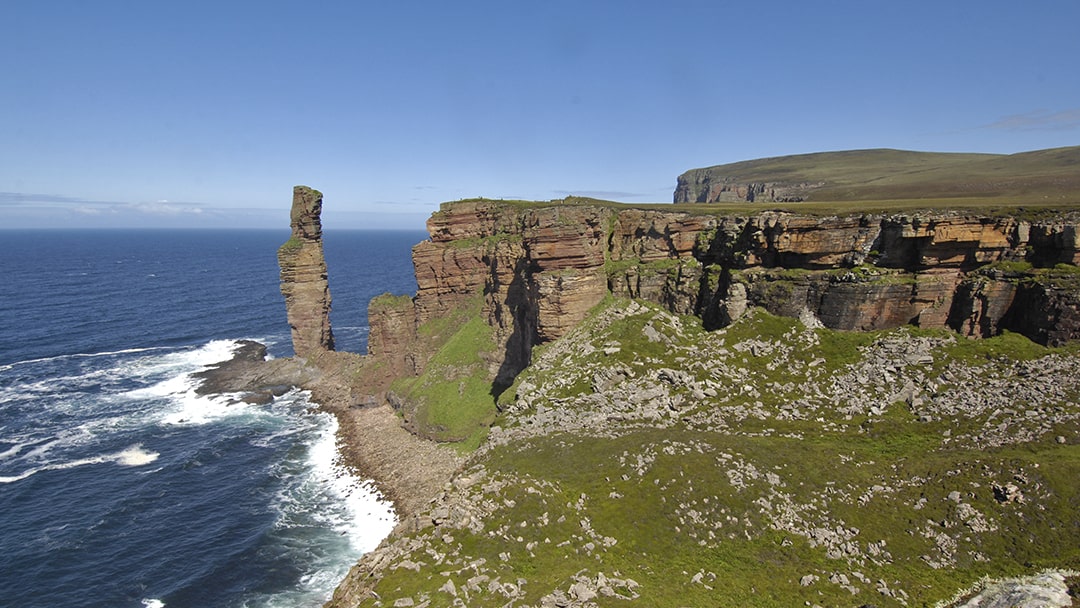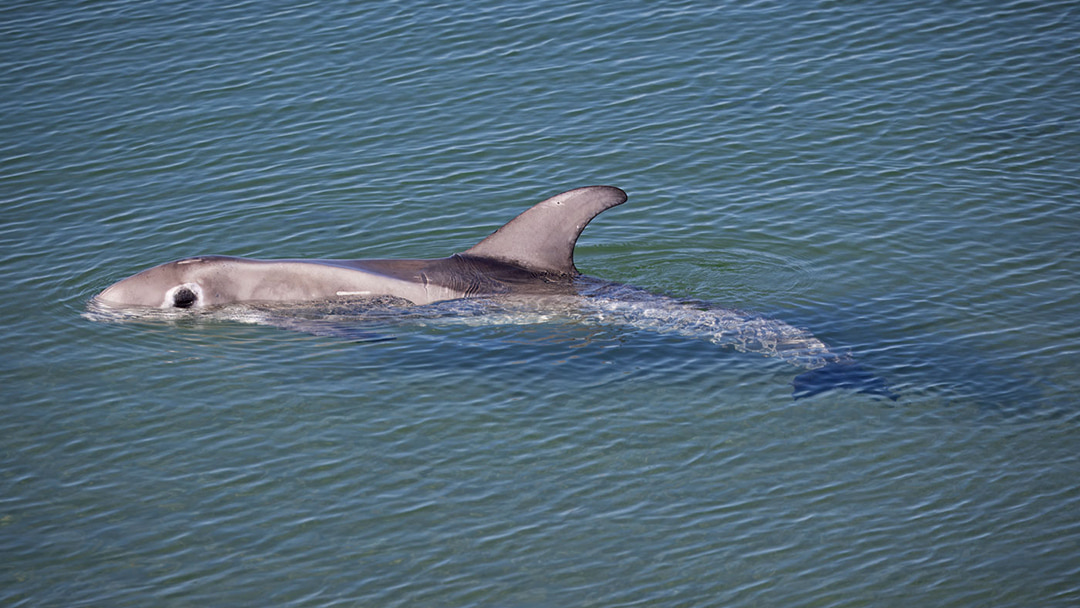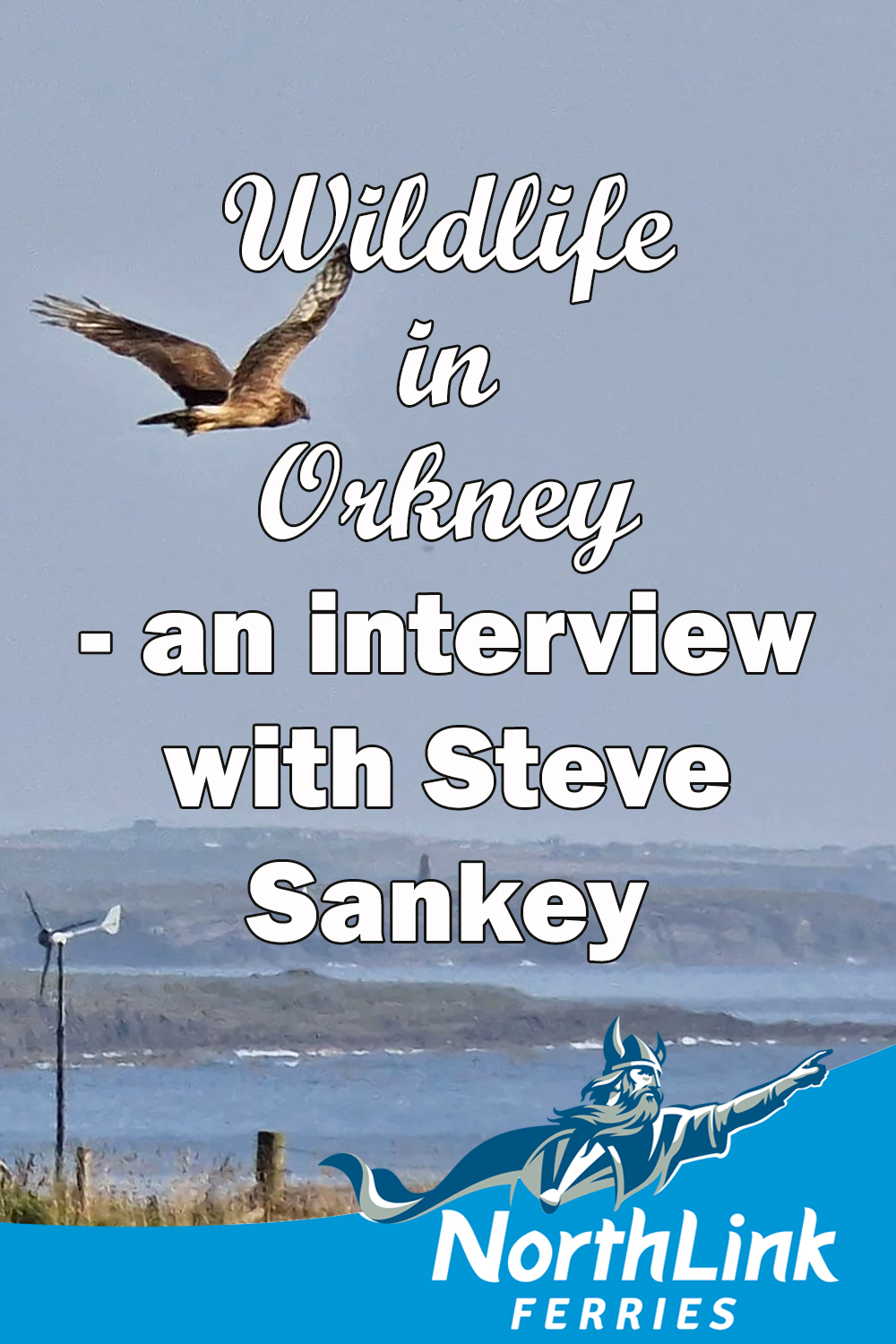Wildlife in Orkney – an interview with Steve Sankey
Orkney is the ultimate destination for wildlife enthusiasts. No matter the season, there’s always something exciting to discover in Orkney, with its pristine waters that are home to an amazing array of marine life and its towering sea cliffs that form ‘seabird cities’.
If you are travelling to Orkney specifically for wildlife spotting, I always tell people that if you start by exploring Orkney by means of the RSPB reserves, you can’t go far wrong! All of the RSPB reserves are brilliant places for spotting wildlife and I really enjoy visiting them.
Steve Sankey is a wildlife tour guide from Orcadian Wildlife, a family-founded business offering relaxed, tailor-made wildlife and culture tours for small groups. Their tour guides also reside in Orkney meaning they have a true understanding of what life is like living in the islands.
Orcadian Wildlife recently won the ‘Business for Nature’ Award at RSPB Scotland’s prestigious 2023 Nature of Scotland Awards, so we were delighted to speak with Steve who offered us a fascinating insight into his business and the amazing wildlife to see in Orkney!

Q. Can you tell us a bit about yourself? When did you first become interested in the wildlife of Orkney?
A. I first visited Orkney in the mid-1980s for a holiday. In the 1990s, I worked either at RSPB Scotland or for the Scottish Wildlife Trust for around 15 years. Both of these organisations have got nature reserves in Orkney, so I got to know the islands pretty well whilst working for them. We made the move north to Orkney from North Berwick in 2003 and we live on South Ronaldsay in Grimness where I am now a wildlife tour guide with my business, Orcadian Wildlife.

Q. What kind of tours do Orcadian Wildlife offer and what can visitors expect?
A. I market my tours as a general mix of wildlife and culture. We visit lots of RSPB reserves and lots of bonnie places to see the wildlife, but I am also careful to include the rich culture and archaeology of the islands. For example, if you join us on one of our tours, we visit various historic Neolithic sites such as Skara Brae or the Ring of Brodgar, as well as Pictish and Viking sites like the Brough of Birsay or the Brough of Deerness.
My aim is to combine both wildlife and culture and it seems to have worked over the years! What’s great about Orkney is that most of its archaeological sites coincidentally are also great places to see wildlife, so that’s good!

Q. What are some of the most common wildlife species that you see on a tour, and what are your favourite species to spot?
A. Everybody wants to see a puffin, and one of the best places in Orkney to see them is the Castle o’Burrian on Westray where you can get close to the birds without causing harm. It’s also great to visit Noup Head, also on Westray, to see the gannets and other seabird colonies. Orcas are also very popular, and they have become easier to see in recent years, but they are absolutely never guaranteed!

I would say my favourites species to spot are the seabirds – and especially the raptors. Orkney is one of the best places to see raptors, such as birds like hen harrier and short-eared owls. Orkney is home to around 20% of the British breeding total of hen harrier, so the islands are a really important place for them.

Q. What are some of your favourite places in Orkney for spotting wildlife?
A. On my tours, I have people for a week and their accommodation is provided by my partner, the 4* Sands Hotel on Burray. We spend two days on the mainland and three days on the smaller islands, and I always make sure to visit three islands as part of the week-long tour. I really enjoy showing people around the islands as I think that it is an important dimension of the Orkney experience.

I always go to Westray on my tours to see the puffins and gannets, and Hoy is another lovely island to explore to see the Old Man of Hoy and to visit the Scapa Flow Museum. I also love our own island of South Ronaldsay, which has a beautiful coastline and some lovely spots such as Hoxa Head or the 4th Barrier.

I always suggest to people that if you start by exploring Orkney by means of the RSPB reserves, you can’t go far wrong! All of the RSPB reserves, whether they are on the mainland or one of the islands such as on Hoy or Westray are brilliant places for spotting wildlife and I really enjoy visiting them.

Q. How do the changing seasons influence the wildlife that can be seen in Orkney?
A. I think May and June are my favourite months in Orkney, mainly because of all the clifftop flowers and birds that can be seen at this time. I sometimes offer specialist photographic tours, and I like to do these in April and October when the light is low and angled and the skies and clouds are spectacular.

In May especially, the combination of blues, pinks and yellows is truly beautiful. The blues are the spring squill, the pinks being the thrift and the yellows being the birds-foot trefoil that come out, and it is just wonderful. I also cannot forget the very rare Scottish primrose that we have here, and that is always a treat to show people when they visit. It usually flowers in April and May, and then again in July.

Q. Is there anything in particular that draws wildlife to Orkney?
A. I think it is the combination and mosaic of heathery hill, farmland and shore that lets all sorts of birds do well here in Orkney. Also, the birds, flowers and marine mammals all make Orkney so special for both its wildlife and for its tourists.
One such example is with curlews; Orkney is home to the highest density of breeding curlews in the UK. Everybody loves curlews. They are big birds, and their liquid calls are a signature tune of Orkney, and they are very rare now to see elsewhere in the UK. It is the same for skylarks – they love rough field borders. The sound of skylarks and curlews whilst walking around the Ring of Brodgar I’d like to think is timeless and has been cheering people up for thousands of years!

The marine mammal life that is in Orkney is also remarkable. There are lots of grey and harbour seals here and I’ve also recorded 12 species of cetaceans – which are whales and dolphins! In the last 20 years, orca, otherwise known as killer whales, have become much more common and are much more easily seen.

Q. Do you have a personal favourite moment from one of your tours?
A. I remember I was once out on a tour, and we were at Noup Head on Westray watching the seals and the seabirds. Then all of a sudden, a pod of orca appeared and came to join us. One of my guests actually burst into tears at the beauty and spontaneity of the moment, as she had never seen orca before, and they do have that effect on you. She nearly had me going too, but I managed to keep calm!
Q. Many people are more eco conscious these days – how do you ensure minimal disruption to wildlife balanced with spectacular experiences?
A. We have a carbon plan at Orcadian Wildlife. Naturally, we have to get people to Orkney whether it’s by boat or by plane, so that results in pretty high carbon emissions by the time people arrive. So what I try to do with my business is to ensure that once people get here, their carbon emissions are minimised and should be neutral. We’ve achieved this by planting 4,000 trees in one of our fields to try and capture carbon, as well as by investing heavily in renewable technology. For example, several years ago I switched to driving a 7-seater electric vehicle and our office has got renewable technology to heat it, such as small wind turbines and a ground-source heat pump. We like to think that we are doing our bit.

Q. Do you have any tips for anyone hoping to visit Orkney, specifically to see wildlife?
A. I think that the best and most practical thing is to join social media apps for birds and cetaceans when you are here on holiday. You don’t need apps for archaeology because the stones don’t move! Using a tour guide is also productive as we know where things are, but this isn’t essential of course. In general, visiting the RSPB reserves which are located all throughout the islands is as good an approach as any, as they are widespread and in some beautiful parts of Orkney.

Q. What would you hope a visitor would take away from a wildlife tour of Orkney?
A. I just want visitors to be able to capture and experience some memorable wildlife moments in really beautiful places – and Orkney does all the hard work for us! Orkney is such a beautiful and unique place, and it really gets under your skin. We also really want to encourage any visitors or tourists to come back to Orkney. Thankfully, my business has got a very high percentage of repeat visits, and that’s what I’d like visitors to take away – I want them to fall in love with Orkney and for them to have such fantastic wildlife experiences, that they want to keep returning at different times of the year.
If you are interested in booking a tour with Orcadian Wildlife, please visit their website at http://orcadianwildlife.co.uk/wPress/
 By Amy Leith
By Amy LeithA recent university graduate with an admiration for Orkney and Shetland, loves to travel and visit new places, enjoys cooking, always listening to music, spends a little too much time on TikTok.
Pin it!
